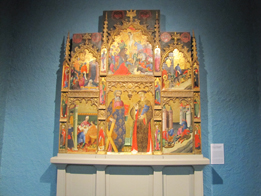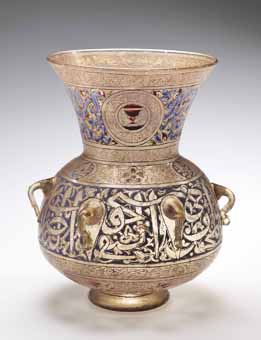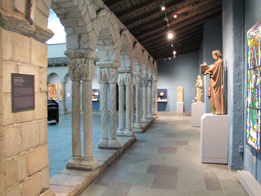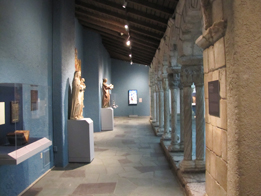 Sojourner’s Truth Staff
Sojourner’s Truth Staff
The Toledo Museum of Art unveiled its renovated Cloister Gallery on Saturday, December 18 after a year-long project designed to enhance the visual experience for visitors and also to display a wider range of the various cultural influences on the Middle Ages.
The project included a complete reinstallation of the art works, a comprehensive cleaning of the Gallery’s three medieval arcades and Venetian wellhead to remove centuries of accumulated dirt and the addition of works of art that had not been on view for decades.
A number of the newly added pieces said Adam Levine, TMA’s Edward Drummond and Florence Scott Libbey director and CEO, reflect “a more accurate and inclusive world history … connecting the Afro-Euro-Asian world.”
Sophie Ong, TMA’s Hirsch curatorial fellow, who led the reinstallation and renovation project, also emphasized the reasons for the cleaning and visual upgrade. She pointed to four reasons for the project:
 First, said Ong, the TMA staff felt it was important to include the entire breadth of the Middle Ages time frame – from approximately 500 C.E to 1500 C.E. Those first five centuries or so have erroneously been referred to as the Dark Ages and, from the standpoint, of the art of the period, they were definitely not dark.
First, said Ong, the TMA staff felt it was important to include the entire breadth of the Middle Ages time frame – from approximately 500 C.E to 1500 C.E. Those first five centuries or so have erroneously been referred to as the Dark Ages and, from the standpoint, of the art of the period, they were definitely not dark.
Secondly, the cultural inclusion of the Islamic world is important given the expansion of Islam into Europe and the various European excursions into the primarily Islamic world, including, for example, the Crusades.
Third, as Levine also point out, the geographic interconnection between Europe, Asia and Africa in both overland and sea explorations brought art together.
Fourth, from a material standpoint, the exchange of goods and media in which to create art introduced a various items crafted from glass, ceramic, paper – among others – to the Middle Ages world at large.

The new Cloisters Gallery, said Ong, takes “an expansive view of the Middle Ages.” The new pieces are a result of foraging through TMA’s storage spaces and brining out “some pieces in storage for decades,” noted Ong.
As a result of the reinstallation, the Cloister Gallery is now exploring themes such as religious plurality and devotion, the legacies of Rome, the role of women in the arts and cultural interaction and exchange.
The new diverse collection on display includes a gilded bronze standing Buddha from around 530 C.E.; Late Antique blown glass vessels with Jewish symbols from Jerusalem; a mosque lamp from Mamluk Egypt; a 13th century German reliquary embedded with a carved Carolingian rock crystal; frescoes of saints from 12th and 13th century Catalonia; ivory caskets with scenes from medieval romances and a 14th century Sultanate Mihrab from India.
Admission to the Museum is always free but visitors are asked to register at the Information Desk when they arrive. The Museum is open Wednesdays, Thursdays and Sundays from 11 a.m. to 5 p.m. and on Fridays and Saturdays from 11 a.m. to 8 p.m. The Museum is closed on Sundays and Mondays and all major holidays.



